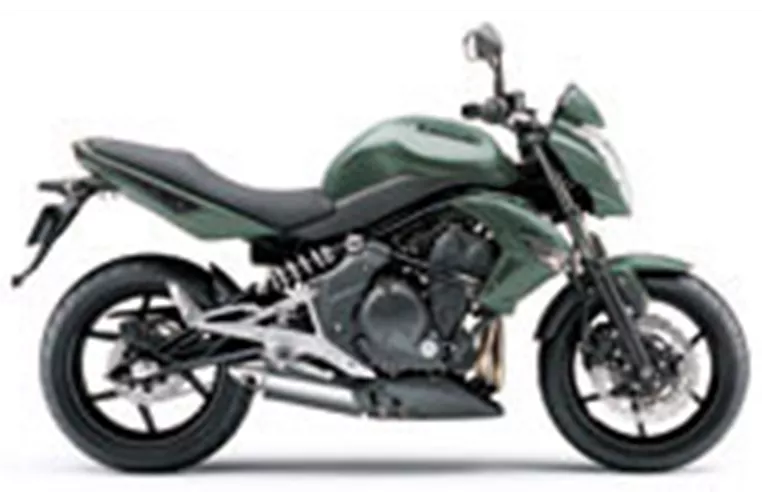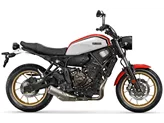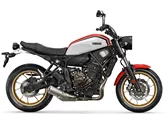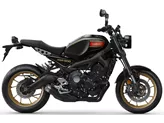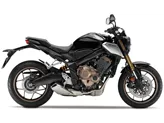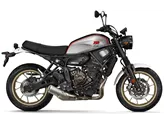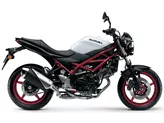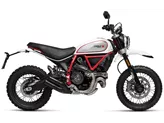Kawasaki ER-6n 2011 vs. Yamaha XSR700 2017

Kawasaki ER-6n 2011

Yamaha XSR700 2017
Vue d’ensemble - Kawasaki ER-6n 2011 vs Yamaha XSR700 2017
The Kawasaki ER-6n 2011 and the Yamaha XSR700 2017 are both naked bikes with similar technical specifications. Both bikes have an in-line engine with 2 cylinders and liquid cooling. However, there are some notable differences between the two models.
In terms of engine power, the Yamaha XSR700 2017 has a slightly higher horsepower of 75 HP compared to the Kawasaki ER-6n 2011's 72 HP. The torque is also slightly higher in the Yamaha XSR700 2017 with 68 Nm compared to the Kawasaki ER-6n 2011's 66 Nm. Both bikes have a monoshock rear suspension and a steel frame chassis.
When it comes to braking, the Yamaha XSR700 2017 has four-piston front brake pistons, while the Kawasaki ER-6n 2011 has double-piston front brake pistons. This could potentially result in better braking performance in the Yamaha XSR700 2017.
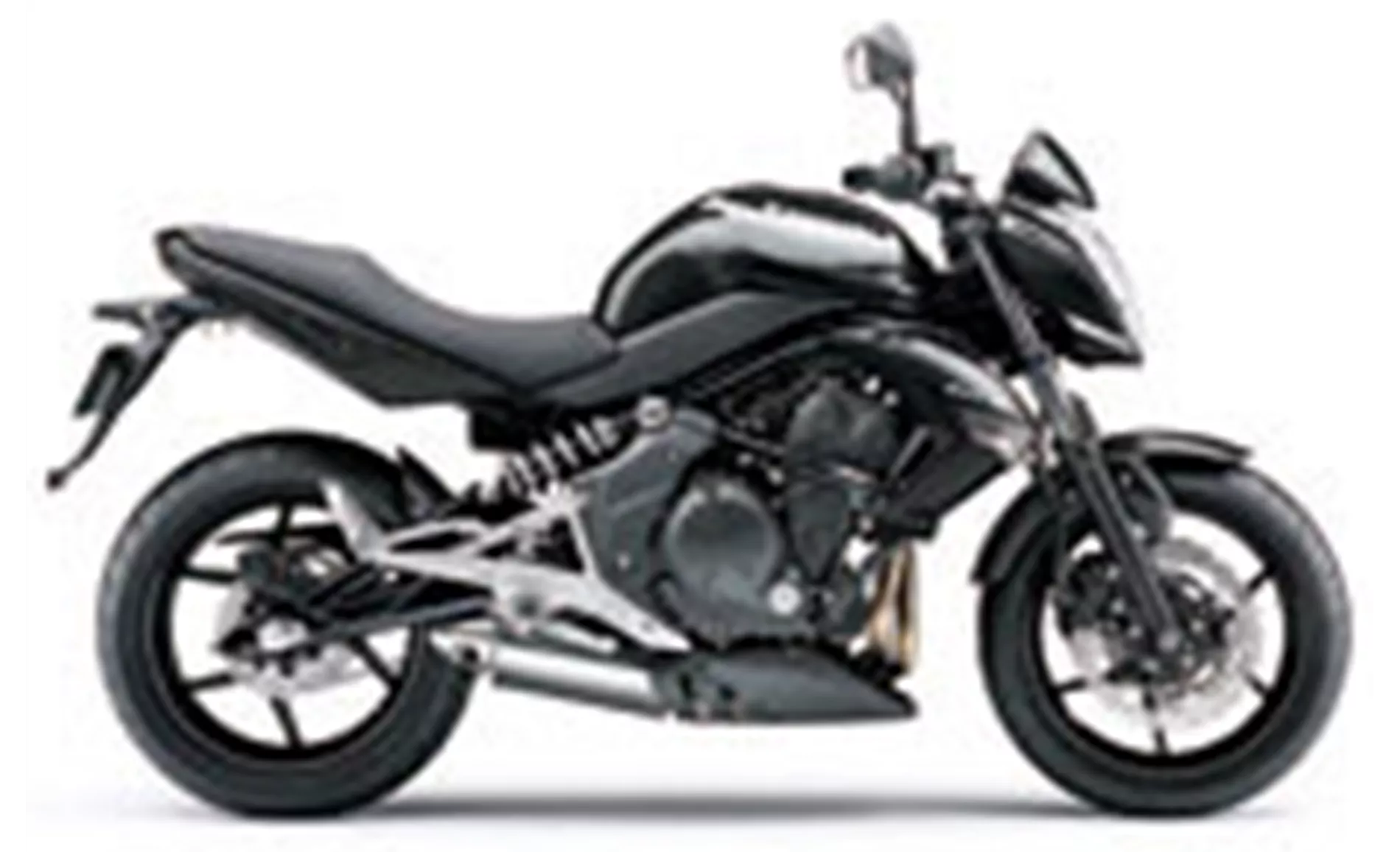
Kawasaki ER-6n 2011
In terms of dimensions and weights, the Yamaha XSR700 2017 has a slightly wider rear tire width of 180 mm compared to the Kawasaki ER-6n 2011's 160 mm. The wheelbase is also slightly longer in the Kawasaki ER-6n 2011 with 1410 mm compared to the Yamaha XSR700 2017's 1405 mm. The seat height is higher in the Yamaha XSR700 2017 with 815 mm compared to the Kawasaki ER-6n 2011's 790 mm. However, the Yamaha XSR700 2017 is lighter with a kerb weight of 186 kg compared to the Kawasaki ER-6n 2011's 208 kg.
In terms of fuel tank capacity, the Kawasaki ER-6n 2011 has a larger capacity of 15.5 liters compared to the Yamaha XSR700 2017's 14 liters.

Yamaha XSR700 2017
In terms of strengths, the Kawasaki ER-6n 2011 has ABS, wider handlebars, a slimmer waist, increased intake noise, a comfortable seat, and an uncomplicated chassis. On the other hand, the Yamaha XSR700 2017 has a wonderful engine, solid workmanship, a cool retro look, a large range of original accessories, a great automatic gearshift, a sporty and tight chassis, and is easy to drive. It is also described as a "joy dispenser" for riders of all ages.
In terms of weaknesses, the Kawasaki ER-6n 2011 does not have any listed weaknesses. However, the Yamaha XSR700 2017 has some weaknesses including the readability of the display, the license plate holder being a matter of taste, a lack of consistency in some design details, and concept-related poor wind protection when driving at high speeds.
In conclusion, both the Kawasaki ER-6n 2011 and the Yamaha XSR700 2017 have their own strengths and weaknesses. The Kawasaki ER-6n 2011 offers ABS and a comfortable riding experience, while the Yamaha XSR700 2017 has a powerful engine and a cool retro look. Ultimately, the choice between the two models will depend on the rider's preferences and priorities.
Caractéristiques techniques Kawasaki ER-6n 2011 par rapport à Yamaha XSR700 2017
Avantages et inconvénients en comparaison
Avantages et inconvénients en comparaison
Kawasaki ER-6n 2011
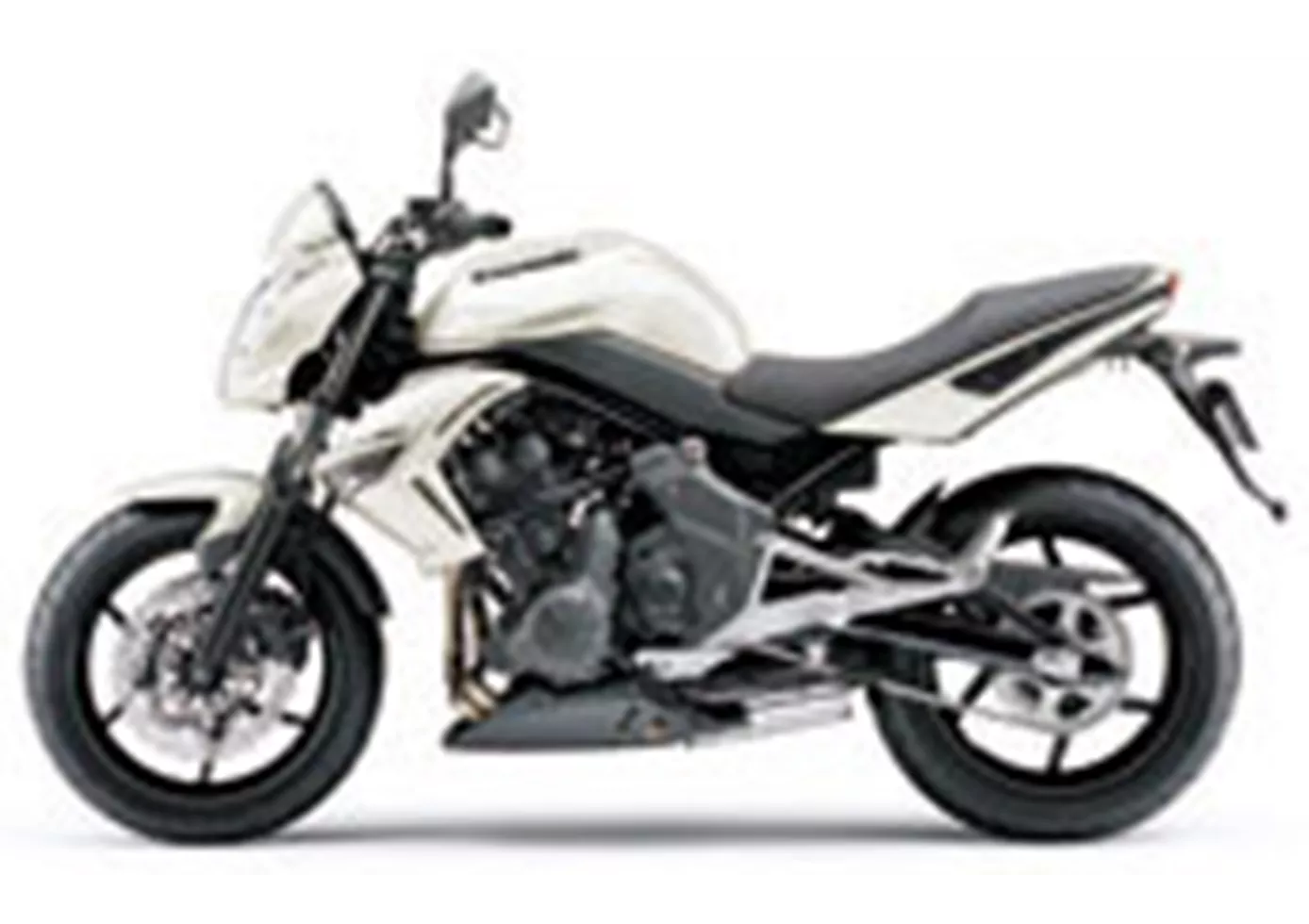
Un ensemble aussi cohérent avec des détails aussi fins n'existe nulle part ailleurs à ce prix. L'ER-6n a retrouvé un peu de piquant sur le plan visuel et dynamique et est plus amusante que jamais.
Yamaha XSR700 2017

La XSR est pour moi la moto parfaite pour le quotidien. Elle est un régal pour les yeux, elle est incroyablement puissante, tout en étant légère et agile. La position d'assise permet de longues sorties, car les bagages peuvent être portés sans problème sur le dos. La XSR elle-même ne sait pas vraiment ce qu'elle veut être maintenant. Mais je trouve trouve le mélange qui en résulte plutôt intéressant. Pour ceux qui ne veulent pas (ou ne peuvent pas) avoir plusieurs motos dans leur garage, la XSR est un très bon choix. est bien servie. Elle apporte tout ce que l'on attend d'une moto. Dans un hôtel, on parlerait d'une offre tout compris. Elle est parfaite pour pour les trajets quotidiens au bureau, pour les excursions du week-end et les petits tours dans le sud. Même avec un passager, la moto se déplace très facilement. Comme d'habitude chez Yamaha, la moto donne une impression de solidité. Ici, tout fonctionne. L'échappement est agréablement silencieux, mais à partir de 5000 tours, il produit un son très agréable et puissant. L'arrière est une question de goût. Personnellement, je modifierais l'arrière et j'enlèverais les éléments en plastique. En outre, je trouve que les rétroviseurs standard sont un peu grands. Ici, l'aspect rétro n'a pas été totalement respecté. Mais cela peut être modifié grâce aux de nombreux accessoires, très rapidement et facilement. Le tableau de bord est en principe bien lisible. Cependant, de nombreuses informations sont sont logées dans l'espace. C'est là que le design et la fonctionnalité se confondent un peu. Résumé en une phrase : Le vélo parfait pour tous les défis.
Comparaison des prix Prix moyen du marché Kawasaki ER-6n vs Yamaha XSR700
There are a few key differences between a Kawasaki ER-6n 2011 and a Yamaha XSR700 2017. In terms of price, the actual average price of a Yamaha XSR700 2017 is about 70% higher. A Kawasaki ER-6n 2011 experiences a loss of 230 USD in one year and 500 USD in two years of ownership. This is offset by a loss of 110 USD and 780 USD for a Yamaha XSR700 2017. Compared to Yamaha XSR700 2017 there are less Kawasaki ER-6n 2011 bikes available on the 1000PS.de Marketplace, specifically 5 compared to 7. It takes less time to sell a Kawasaki ER-6n with 49 days compared to 91 days for a Yamaha XSR700. Since model year 2006 1000PS.de editors have written 16 reviews for the Kawasaki ER-6n and 26 reviews for the Yamaha XSR700 since model year 2015. The first review for the Kawasaki ER-6n was published on 6/29/2005 and now has more than 11,200 views. This compares to more than 13,700 views for the first review on Yamaha XSR700 published on 7/22/2015.
